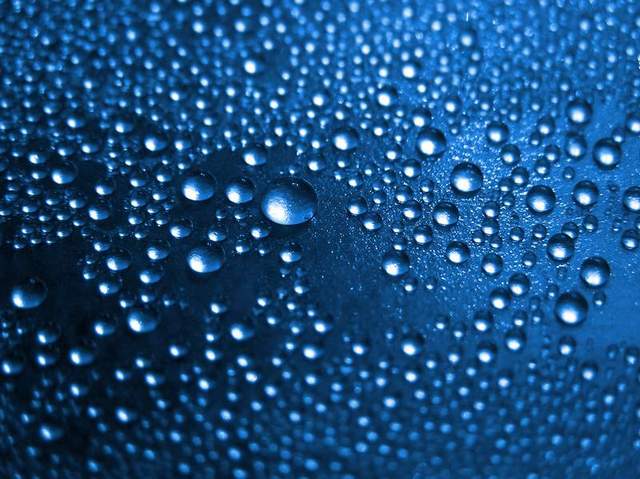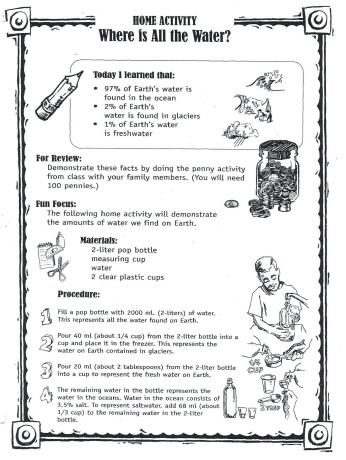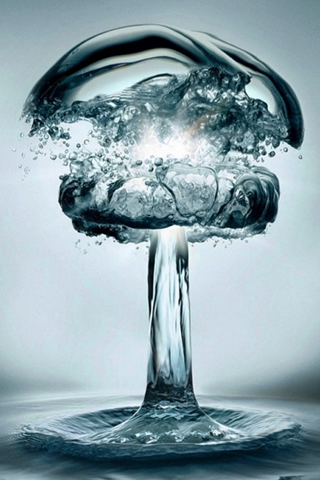|
Where is Water Found?
Group Size: Small Groups

Summary:
This activity helps students understand the distribution of water on Earth.
Main Curriculum Tie:
Science - 4th Grade
Standard 1 Objective 1
Describe the relationship between heat energy, evaporation and condensation of water on Earth
Materials:
100 pennies for each group
Earth globe
Home Activity Student Worksheet: Where is All the Water? (pdf)
Background For Teachers:
Water covers 70% of Earth's surface and is found in different locations on Earth. The amount of water in the oceans, atmosphere, and on land is hard to comprehend. Approximately ninety percent (97%) of it is found in the oceans. The atmosphere holds less than 0.001%, about two percent (2%) is found frozen on Earth in glaciers, and one percent (1%) is freshwater found in lakes, rivers and groundwater. Annual precipitation amounts to 30 times the total water found in the atmosphere at any given time.
In the western United States, water is a valuable resource that comes and goes with the seasons. During the winter the snow falls and accumulates in the mountains. As the snow melts in the spring and during the summer, the water is absorbed into Earth or forms small streams that flow down the mountains. Groundwater is all the water that penetrates the soil and underlying rock layers. Water that flows off the surface is called runoff.
Using water wisely is the responsibility of every member of society. It is a valuable resource, and we are responsible for its management and reasonable consumption.
Intended Learning Outcomes:
1. Use science process and thinking skills
2. Manifest scientific attitudes and interests
Instructional Procedures:
Pre-Assessment/Invitation to Learn
In small groups, ask students to brainstorm a list of all the places where water is found on Earth. Have them write this list in their journals.

Instructional Procedures
Discuss how students might group or classify the items in their lists. Write the classifications oceans, glaciers, and freshwater on the board. Tell students these are the classifications (categories) that water experts have developed. Discuss each category, and then have the students write these headings in their journals. Have students sort the items they wrote in their journals into three categories.
Have students engage in a group discussion of estimating the percentage of water found in each of the categories. Note: Based on the category lists most students will probably estimate that most water is found in freshwater. Have students write their estimates in their Findings Booklet. The total of the percentages should add up to 100% correlating with 100 pennies.
Distribute 100 pennies to each group. Have them show their estimate using the pennies.
Provide students with the actual percentages: Oceans 97%, Glaciers 2%, and Freshwater 1%. As a class, compare group estimations to the actual percentages.
To help students conceptualize what 97% as ocean water, 2% as glaciers, and 1% as freshwater means, ask the students to recreate these percentages by stacking 97 pennies (97% oceans), 2 pennies (2% glaciers), and 1 penny (1% freshwater). Have students record the true percentages in their Findings Booklet on page 6. Discuss these proportions.
Review appropriate science language as the class discusses the various water sources. Looking at a globe of Earth, describe the difference between how much land you see compared to water. Point out that 70% of Earth's surface is covered by water.
Because water in air was less than one penny, it is not represented numerically. Point out to students that this 0.001% of water in air is very important.
Extensions:
Fine Arts/Visual Arts-
Create a mural of the locations of water on Earth. Be sure that this mural graphically represents the relative amount of water in each of the areas (oceans, glaciers, freshwater) (Standard III, Objective 2)
Language Arts-
Describe in detail the places where water can be found around your home, school, or community. (Standard VIII, Objective 6)

Homework & Family Connections
Discuss and have students do the Home Activity Student Worksheet, Where is All the Water? (pdf)
Assessment Plan:
Check for students' understanding with the answers they record for the Findings and Rename Earth activity in their journals.
Subjects > Geography > Geography 8th grade > Main river basins and their characteristics > Main river basins and their characteristics. Methodical recommendations
|













